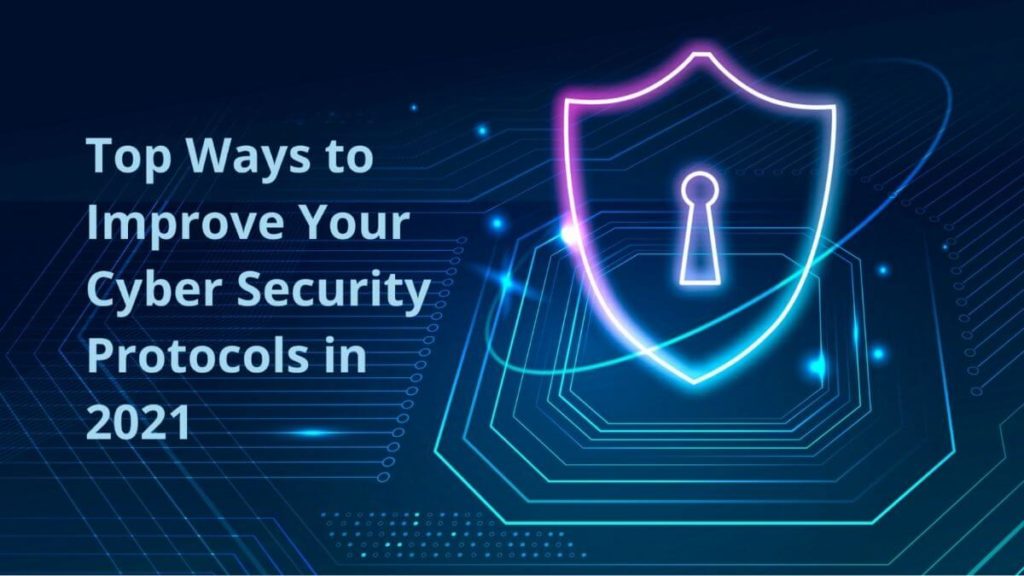Wondering how to enhance your cybersecurity protocols for maximum safety against different cyber-attacks?
Imagine more than 300,000 websites getting hacked each day! That is why you need to think about how security protocols can impact the success of your business.
Your website is your business front that becomes the first point of contact for any customer. So, having suitable cybersecurity protocols in place for your website can make a massive difference.
The recent pandemic has allowed attackers and hackers to expose more websites due to the higher digital transformation rate.
Additionally, many businesses needed rapid digitization of operations due to the massive demand for online products, which has exposed several vulnerabilities.
For example, a survey indicates that businesses worldwide will lose $6 trillion due to cybercrimes by the end of 2021, which will reach an astounding $10 trillion.
One of the key reasons for such a massive loss is data leaks and access to sensitive business information extracted through phishing attacks or malware.
Here we will discuss some of the top ways to improve cybersecurity protocols to prevent such cyber-attacks. But, before we discuss the improvements, let’s understand the fundamentals of the protocols.
What is a cyber security protocol?

Cybersecurity protocols are a set of activities that ensure the safety of your organization’s IT assets against malicious attacks, data breaches, and other cybercrimes.
Eliminating the possibility of attacks or having preventive measures in place can not only help you elevate the higher availability of platforms but enable the security of critical data.
You can employ such protocols to secure your organizational systems against several different cyberattacks like SQL injection, DDOS attacks, malware, ransomware, phishing attacks, etc.
Now that you know what is a cybersecurity protocol? Let’s discuss some of the top ways in which you can improve such protocols.
1. Hierarchical cybersecurity policy
A centralized cybersecurity policy is always advantageous for your organization. However, it would help if you had the hierarchy defined to establish the policy across departments.
It may be challenging to set user access rules, employee authorizations, and even manage data validations across several teams with different functions.
The best way to ensure that your central policy effectively functions across the organization is to allow each department to formulate security policies.
So, each department will have a separate cybersecurity policy based on the central policy to form a hierarchical structure.
2. Risk Assessment Approach
Risk assessment is one of the essential activities when it comes to the deployment of cybersecurity protocols.
It is a process that involves analysis of different security touchpoints, identifying valuable assets, vulnerabilities, and current cybersecurity measures deployed.
A risk assessment plan can help you avoid any cyberattack which can disrupt your business activities and even cost high due to data recovery.
Risk aversion is essential to prevent data breaches and the safety of sensitive information about business operations.
The best way to ensure the efficiency of risk assessment is by identification of loopholes in the current cybersecurity systems.
You can leverage vulnerability testing for risk assessment. There are two types of vulnerability assessments that you can use for your organization.
- Predefined assessments are tests that help you identify common vulnerabilities that may occur in different database environments. However, these tests can be appropriate for specific database environments, and for others, you may need to customize the assessments. Predefined tests include different categories like CVE (Common Vulnerabilities and Exposures), Security APAR (Authorized Program Analysis Report), and others.
- Custom assessments are tests specific to your system and cybersecurity needs. Here, you need to assess the tests regularly and check for compliance with the industry standards. Some of the common custom risk assessments that you can design are CAS (Cognitive Assessment System)-based and Query-based tests.
Another aspect of cybersecurity is data access. You need to configure the data access policy well to ensure that there are no breaches. One way to do this is by deploying a multi-factor authentication protocol.
3. Multi-factor Authentication
Multi-factor authentication or MFA is a type of cybersecurity protocol that you can integrate to authenticate user access by adding a layer of verification.
It allows you to verify the data access or authenticate a user through the second layer of verification.
For example, if you want to sign in to your Google account, the login page will ask for your credentials like username or email with the password.
Further, you will have to authenticate through a passcode sent to your device or through a Google application on the smartphone. Similarly, you can ask your employees at the organization to use multi-factor authentication for login.
Another important aspect of multi-factor authentication that you can leverage for your cybersecurity needs is to restrict access.
Especially when you are integrating a third-party service into your system, it is essential to control service providers’ access to your organization’s sensitive information.
However, if your software application does not have the right encryption protocols installed, a multi-factor authentication system is of no use.
4. Encryption Protocols
HTTPS is one of the most significant protocols to establish for your organization when it comes to encryption protocols. It determines the safety of your website and also ensures that your system has protection against hackers.
For HTTPS, you need an SSL certificate that indicates that your website has encryption of data exchanged between the server and browser.
You can buy a cheap SSL certificate from a trusted vendor in the market and install it on your website. SSL or Secured Socket Layer deploys encryption algorithms that scramble the data so that it is hard to read for a hacker.
Conclusion
Cyberattacks will grow with more users on the internet and complex innovations like Artificial Intelligence or even the Internet of Things (IoT).
So, it becomes vital for organizations to have good cybersecurity protocols to avert any unpleasant cybercrime or malware that can disrupt their business.
First, however, you need to plan these protocols, assess and identify critical assets to maximize safety.








